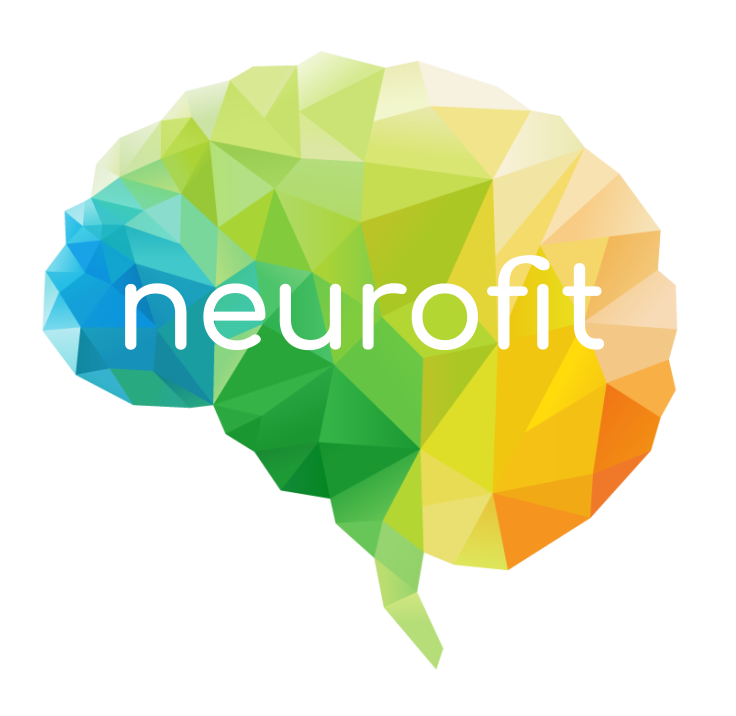
Overview
As a capstone project at the end of our User Experience concentration, we were given the opportunity to work with an external client to create an Experience Map for their product or service. It was up to us to discover how our skills could provide value to the client.
We worked with a company called Neurofit, a virtual reality technology startup that had created both hardware and software in order to offer new tools to personalize recovery for patients with brain injuries.
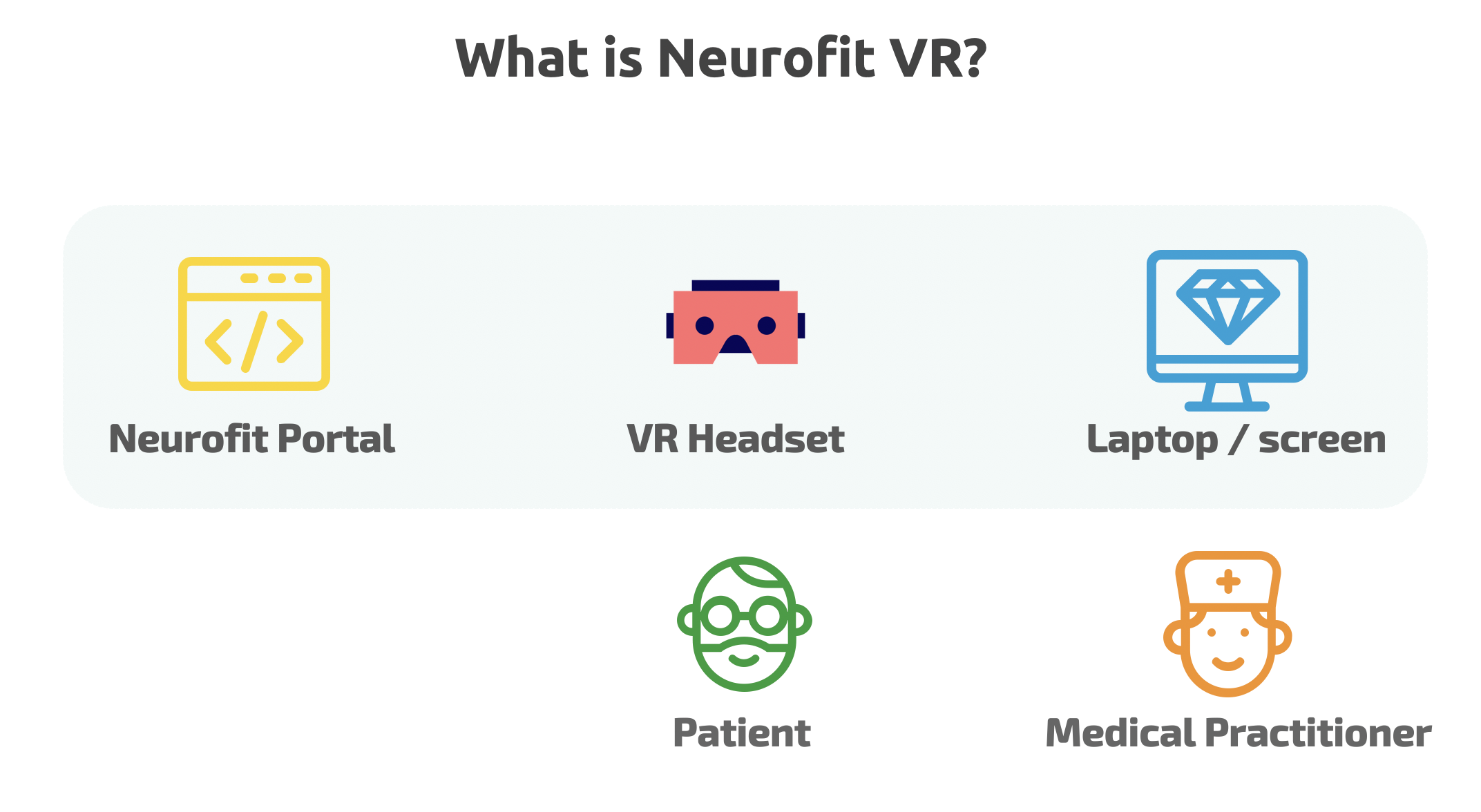
Understanding the Business
To kickoff the project, my team met with the CEO of Neurofit to understand how the business works, what services they offer, and how we could support them.
Neurofit is a company that produces VR headsets and a library of games that could be used by practitioners to assess a patient with brain trauma. These games are used to gather data and metrics that support the medical practitioner to build a customized recovery plan for the patient.
Originally we thought we would map out the experience for the user of the VR headset, the recovering patient. But as we continued asking questions about Neurofit, we realized that even though the business already had working prototypes, they were still in the process of finding clients for Neurofit’s service.
With this information, we came to the conclusion that it was more important to map the experience of the practitioner administering care. They were Neurofit’s primary clients. We decided that we would use our skills to uncover the value-added that Neurofit creates as a business, so that they could better market their product to potential clients.
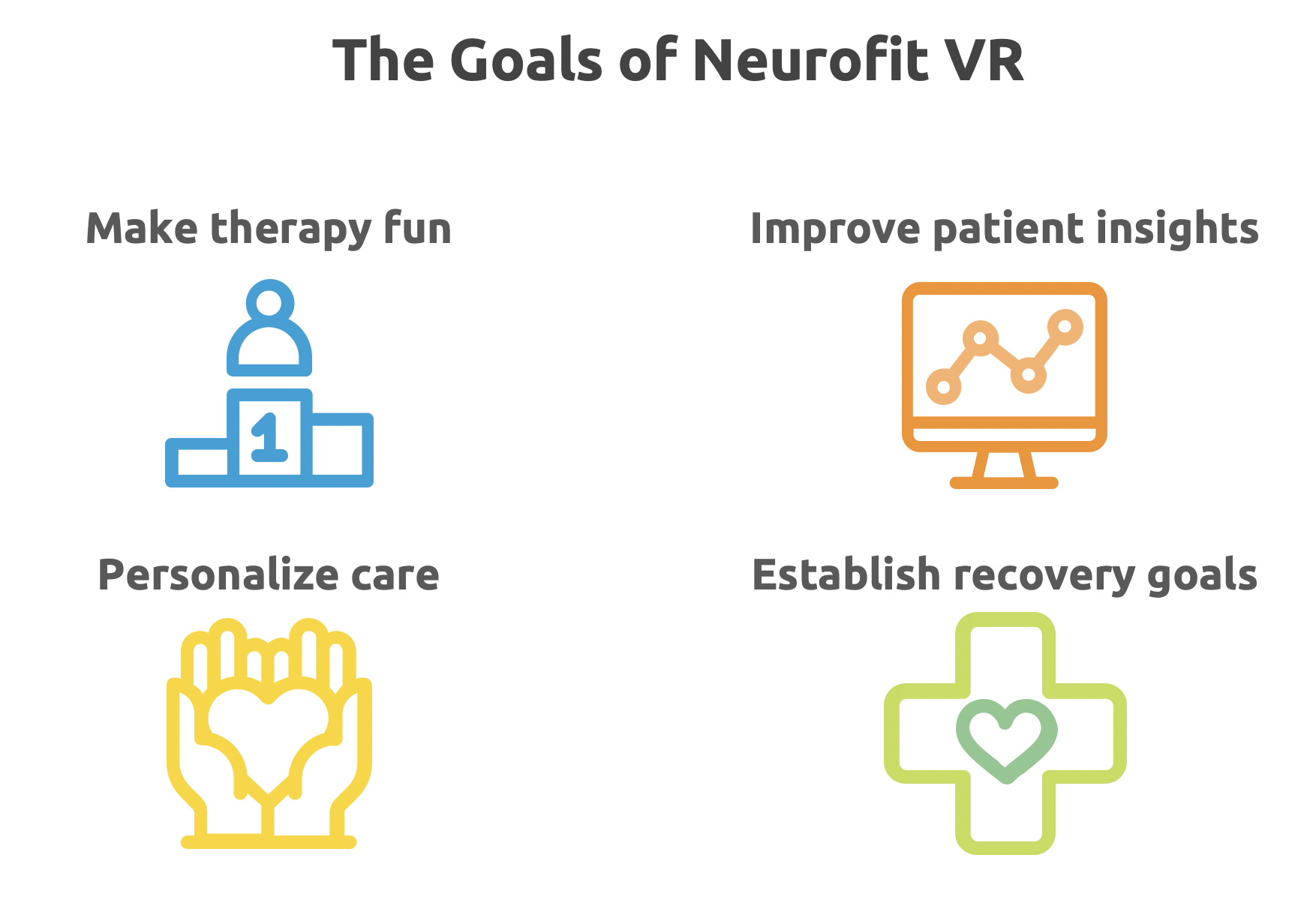
Key Lessons
Never assume what the solution should be.
Always be open to new information and changing priorities.
Building a Persona
Our mission was to understand the process that medical practitioners use to help patients recover from brain injuries. We set up 3 interviews with various medical professionals to learn about the trauma recovery process.
In order to prepare for the interviews, we did some independent research to learn a little about the domain of brain injury recovery in order to ask effective questions. We built an interview guide so that the team could be aligned on what questions to ask and gather quality data. We asked questions such as ‘what does a typical appointment look like?’ and ‘do you have any strategies for keeping patients engaged in therapy?’.
The purpose of our interviews were twofold. We both wanted to understand the people who would be using Neurofit and understand the experience that Neurofit was trying to improve. We conducted our interviews, with each one being about 30-60 min long. The team then came together to compile our data and find common trends among what we uncovered. We used this data to create the Persona, Lucy.
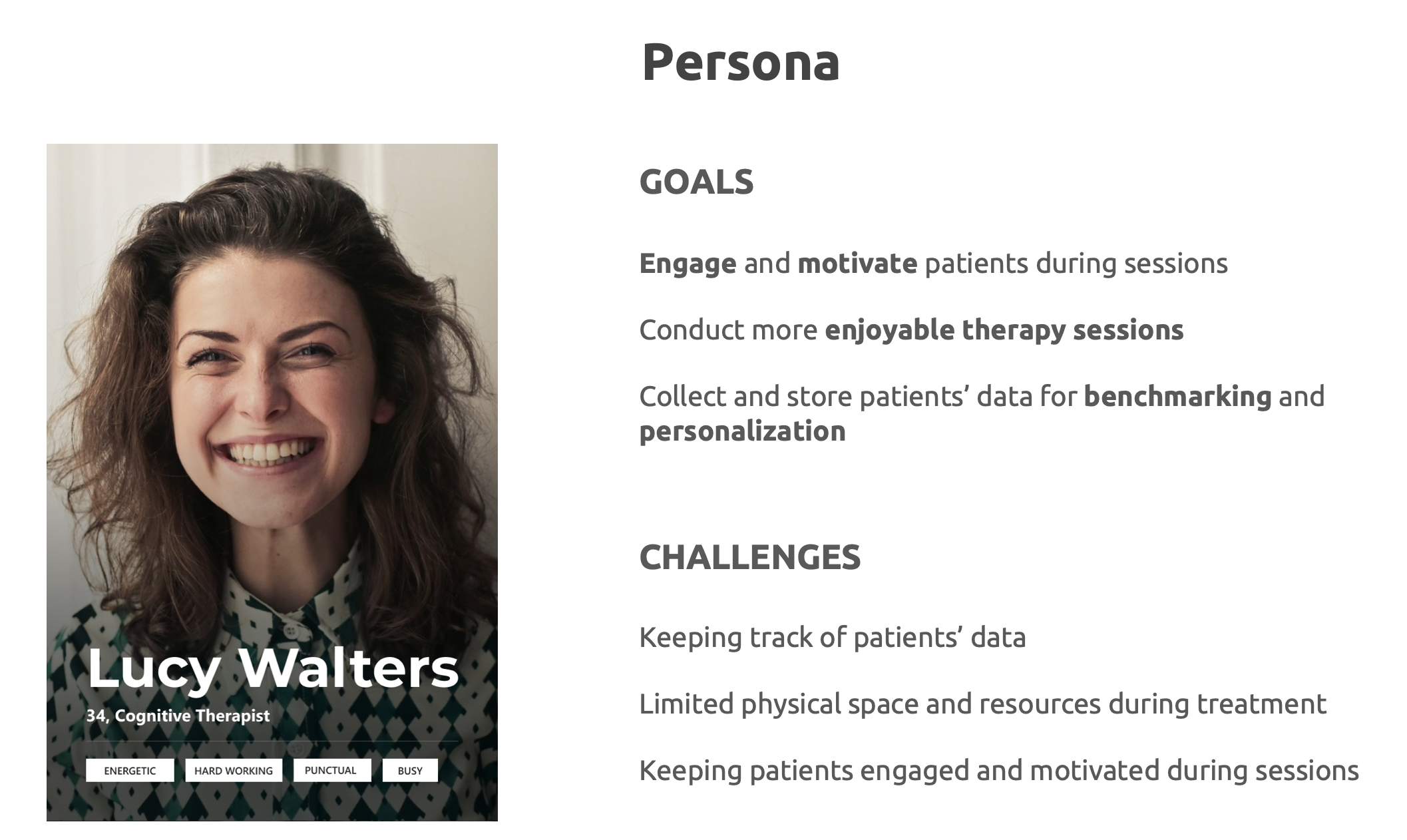
Mapping Neurofit
Our team then got to work on building an ‘As-Is Experience Map’ of the current process medical practitioners go through when helping a patient recover. We used Lucy as a guide to think through the challenges they face along the way.
Because of the multi-person nature of this work, the map focused on how the practitioner’s journey aligns with the patient’s recovery. We built the map around what the practitioner is doing, thinking and feeling in parallel with the recovery goals, needs and barriers the patient faces along their recovery timeline.
It was mentioned multiple times in our interviews that patients often need to re-enter care. We emphasized this non-linear nature of patient recovery as a primary feature we emphasized in the map as the ‘cycle of care’.
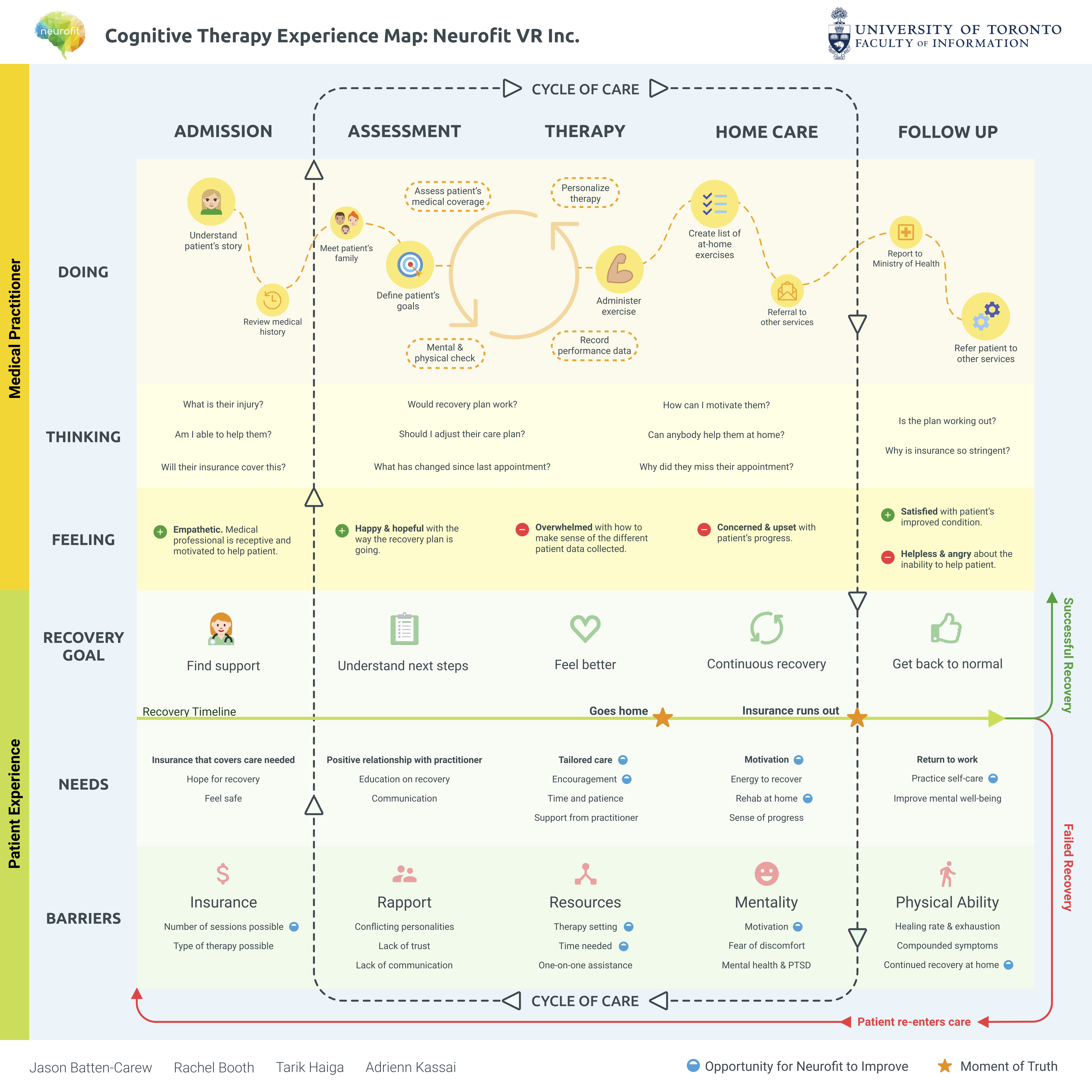
Now that we had a solid grasp of the challenges Lucy faces in helping patients recovery, we were ready to start thinking about how Neurofit could help provide solutions for her.
We knew from our research that Lucy has difficulty with finding objective measures to assess complex trauma. Keeping patients engaged with their recovery exercises was also a challenge.
On the patient’s end, we knew that the ability to move from hospice care to being able to recover from home is an important milestone in the recovery journey. We also understood that insurance coverage is a critical concern that limits how much help a patient can be given.
We used all this information to make a ‘To-Be Experience Map’ that depicts how Neurofit could improve the process for Lucy. This map emphasized places how patient needs were being address and how Neurofit was able to help. A major change to the map was introduced in the ‘Home-Care Cycle’, because of Neurofit’s unique ability to extend treatment into the home.
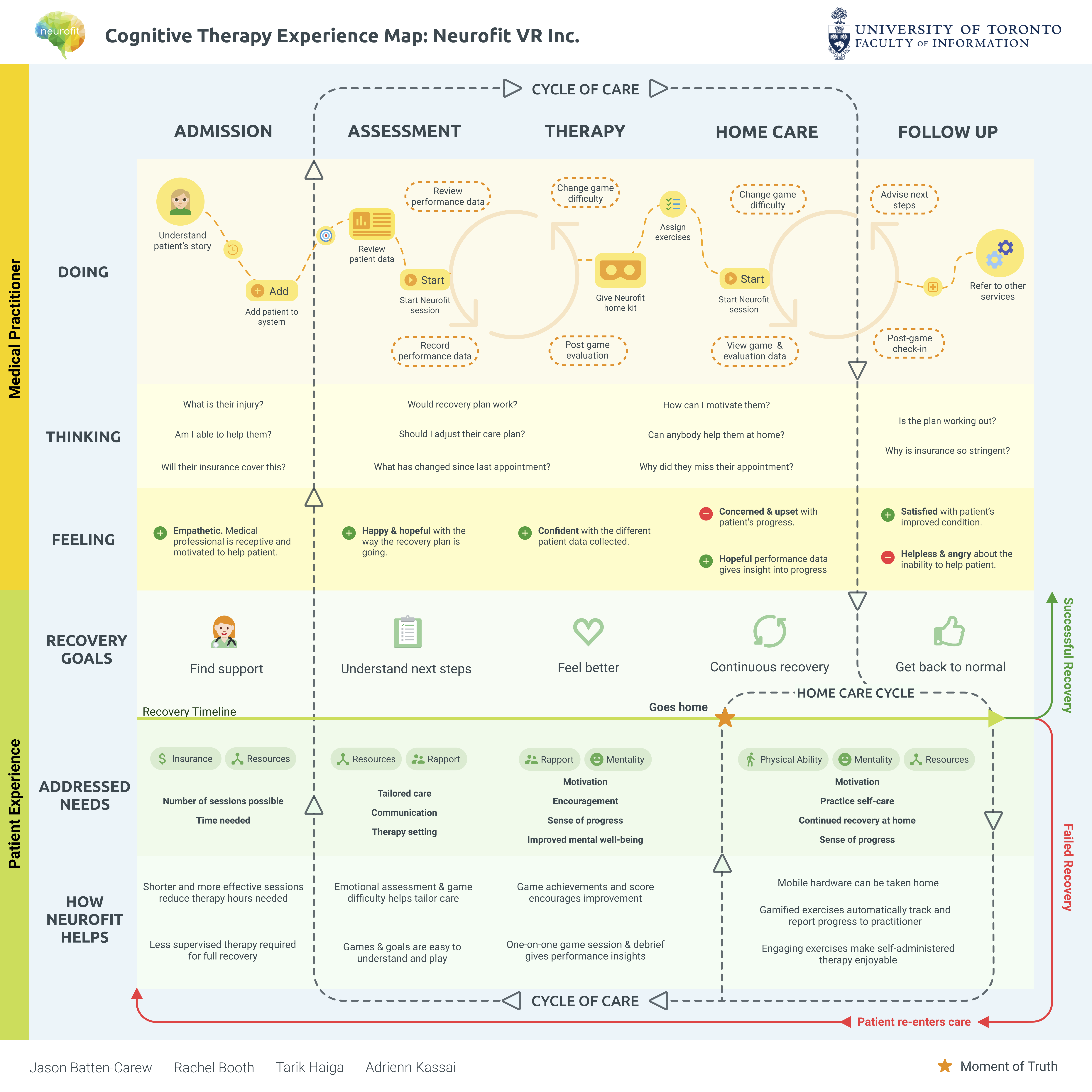
Reflection
After creating our two experience maps, we had a final wrap-up with the Neurofit CEO to present our work. This work was able to give him more material to fully convey the value that Neurofit offers to medical practitioners.
This was an incredibly fun project to undertake, since it pushed us to learn about a subject that we had no knowledge of beforehand and forced us to think outside of the box for how to best utilize our user experience skills. We had to think long and hard about how to make sense of the data we collected, synthesize it into something useful and how to present it in a clear and coherent way.
I appreciate that Neurofit brought us on and I wish them all the best in making their product a success!
